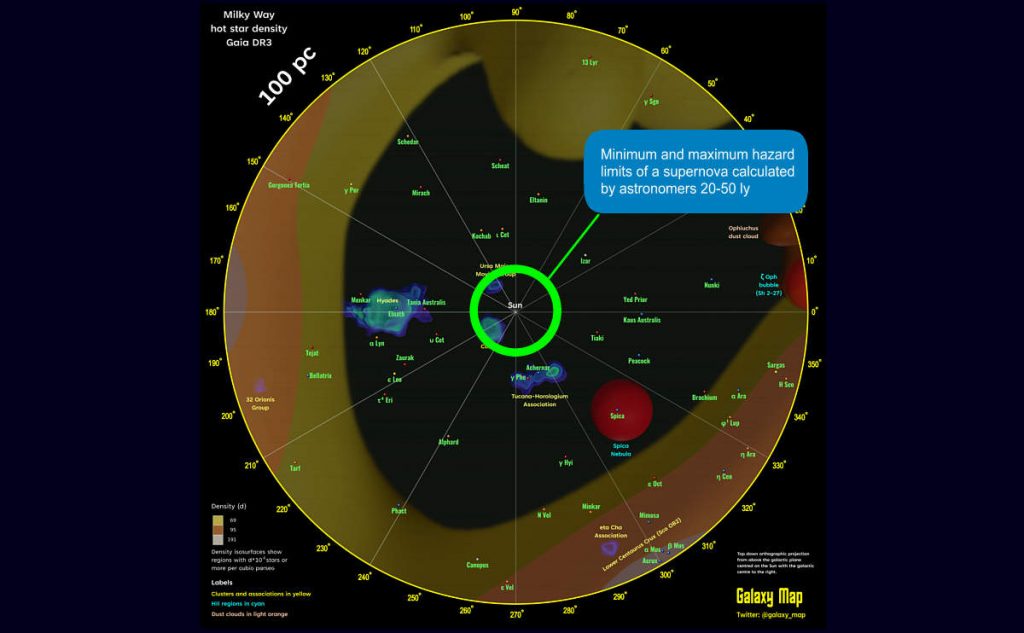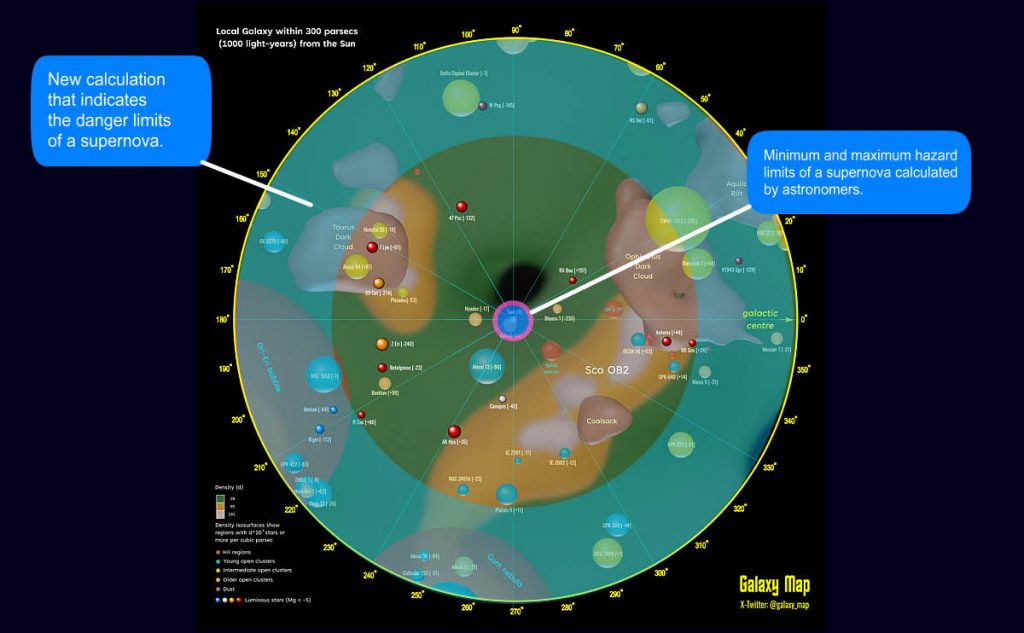The Evidence 3 – Supernova distance hazard calculation
First conclusion
Based on all the pages published previously we can draw the first conclusions, namely that the safety distance of a supernova increases considerably. Since it has been established from the graphs and explanations that they cause a lot of damage despite being at great distances (we are talking about thousands of light years), we can indicatively state that:
The distance from which a supernova is dangerous for life on earth becomes approximately 500/1000 ly (Light Years)
If a supernova exploded, for example, like the Tycho Supernova, but at 1000 AL, it could cause the explosion of hundreds of volcanoes like the eruption of Mount Pinatubo in 1991. Contrary to what was initially thought, the danger distances change from 20/50 light years to 500/1000 light years.
If Betelgeuse (be careful, this was written in 2016), a star 640 AL (I recalculated the distances, it's closer) from us, were to explode, it would be a big problem for us. On Wikipedia, in the list of supernova candidates within 1000 light years, there are 7 stars. Unfortunately, there is also the possibility that Betelgeuse will explode in the “short” term. “Short”, in astronomical terms, can even be 10000/100000 years. These numbers given by astronomers, based on a theory that I will explain in the following pages, are not in line with the number of supernovae that explode on average in galaxies.
Let’s recap
To provide some order, I'll try to summarize the salient points touched on and the new theories:
- Galactic cosmic rays cause sunspots to decrease and solar radiation to decrease
- Cosmic rays always cause an extension of the solar cycle to the point of even eliminating it
- In addition to affecting the Sun, cosmic rays affect all the planets in the solar system
- On Earth, cosmic rays increase volcanic eruptions and earthquakes.
- Earthquakes could be compared to (or are) underground volcanoes
- The solar wind causes earthquakes (and volcanism) and can be compared to an electronic circuit
- Solar wind and cosmic rays keep the Earth's core molten
- Galactic cosmic rays and the Earth's magnetic field can be compared to an electronic circuit
This ends the chapter dedicated to supernova explosions and their effects on the solar system. But there are many other things I discovered. Please read the chapter dedicated to the “Local Bubble” by clicking the button below.
References
Lorem ipsum dolor sit amet, consectetur adipiscing elit. Sed non risus. Suspendisse lectus tortor, dignissim sit amet, adipiscing nec, ultricies sed, dolor.




Leave a Reply